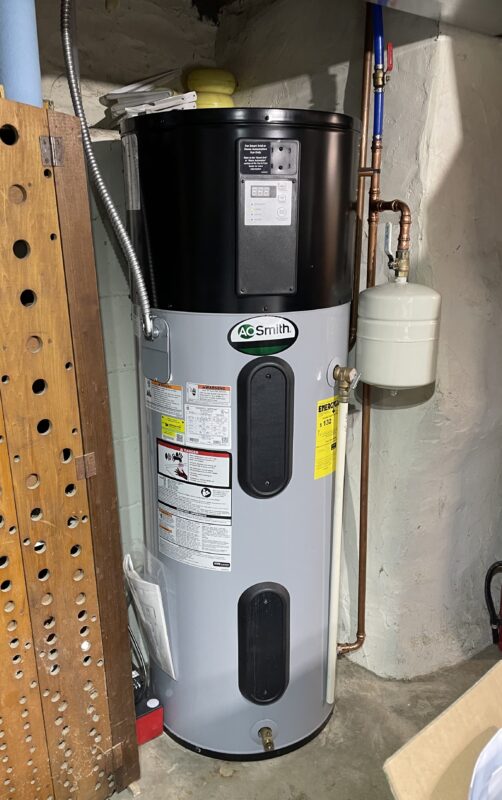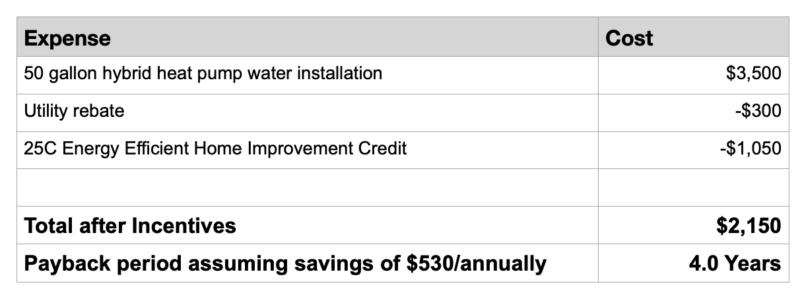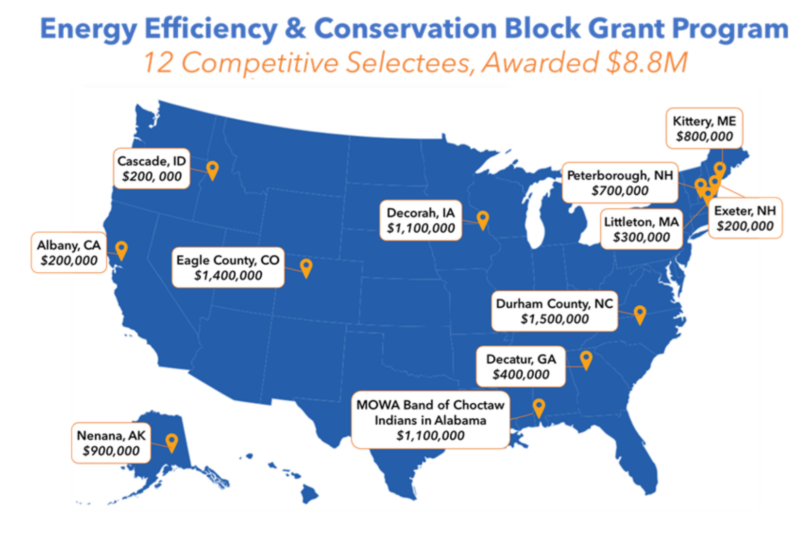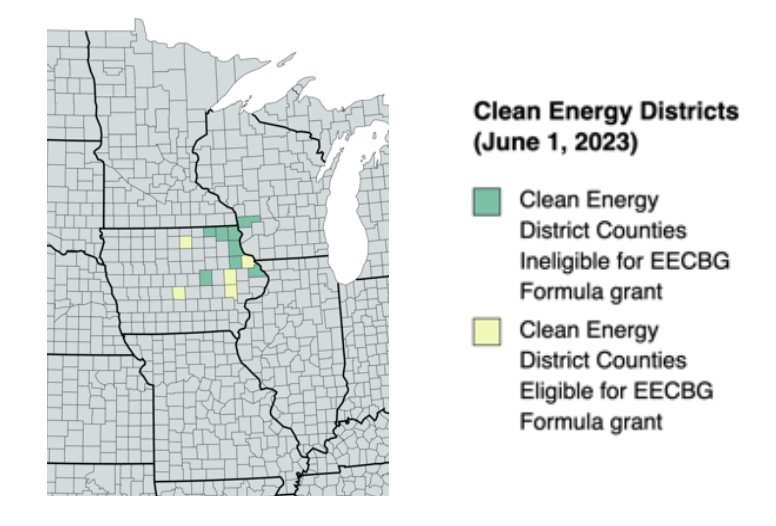Guest Story by Laura Peterson
Earlier this month our energy utility came to shut off our natural gas connection. Usually, having your gas service cut off means either you’re moving to a new house or you’re way behind on your bills. But in our case, it’s because we’ve eliminated all gas appliances in our home. Over the last few years, we’ve undergone a transition to an all-electric household. Here is how it worked in our home, in the hopes that you might find something useful here if you’re considering electrification in your own.
We live in a 1950’s ranch home of about 1350 square feet, with additional area in our partially finished basement. The first steps we took after moving in were to add attic insulation and to do basic air sealing around doors, windows, and the basement rim joist. In conjunction with air sealing, we also installed an air exchanger to manage moisture in the house.
A few years later, we were able to install solar panels on our roof. We followed the advice of our electrician to upgrade our electrical service to a 200 amp panel at the same time, in anticipation of increasing our electric load for heating and eventually electric vehicles.
Next we looked at household heating. Our house was previously heated by a gas furnace with forced hot air. We also had a central air conditioning unit. Both our furnace and air conditioner dated to the early 1990’s, and since heat pumps can both heat and cool, one advantage of a heat pump was that we could replace our furnace and air conditioner with a single appliance. We also knew we wanted to stop burning fossil fuels in our home. This also led us to favor an all-electric heat pump over another gas furnace or a dual natural gas-heat pump system.
We consulted with the Energy District to get estimates of our household heating demand that would help us know how to select and size our system. In late 2021 we had our gas furnace and air conditioner removed, and installed a ducted, 3 ton heat pump system in their place. The outdoor unit looks similar to an air conditioner, and the indoor air handler, installed in our basement, fit directly into existing duct work.
After this, the only remaining gas appliance in our house was our water heater. This meant that the vast majority of our monthly gas bill was the connection fee, so it made a lot of sense for us to take the final step to fully electrify our household. The ability to take advantage of a federal tax credit (30% of the project) through the Inflation Reduction Act, as well as a $300 utility rebate, made the cost of a new heat pump water heater comparable to a gas-fired water heater. So, this fall we removed our gas-fired water heater and replaced it with a heat pump water heater, eliminating our natural gas usage entirely.
FAQs:
Does the heat pump provide enough heat on its own in cold weather?
Yes. Our heat pump is rated to -13°F. Though it runs less efficiently at such cold temperatures, it can still meet our heating demand. It also has a built-in back-up system (electric resistance heating coils) for even colder temperatures. We do burn wood in a small woodstove for supplemental heat, but we know from the experience of being out of town during a run of very cold days last winter that the heat pump can do the job on its own even if we’re not at home to feed the woodstove.
What is the living experience like?
For the most part, our electric appliances are as invisible to us on a daily basis as their gas counterparts were before. Hearing the heat pump outside our kitchen window in the winter is similar to hearing an outdoor A/C unit in the summer, and neither the air source heat pump or the heat pump hot water heater are noticeably louder than our other appliances. The heat pump is actually considerably quieter than our old A/C unit except in very cold temperatures.
One change we’ve made during the winter is to use a smaller thermostat setback at night. We do this keep the heating demand steady rather than demanding the most heat during the coldest part of the day, since unlike a gas furnace, the efficiency of the heat pump changes as the outdoor temperature changes.
We do notice a drop in temperature in our basement laundry room, where our heat pump water heater is installed, since the heat pump is essentially transferring heat from the surrounding air to create the hot water. The temperature drop is not extreme, however, and in the summer months, the same effect will provide additional cooling.
How did our utility bills change?
Determining how electrification has changed our utility bills is complicated by the fact that we also installed solar panels shortly before we had the heat pump installed. But we have gotten some sense of the difference by looking at our electric usage directly.
With the installation of the heat pump, our annual electric usage went up by around 20%, or the equivalent of around $200/year. A good portion of our increased electricity use during the winter was offset by much lower electricity use during the summer, since the new heat pump is much more efficient than the old air-conditioning unit it replaced (with the new system, our summertime electric usage was reduced by close to 50%).
The Energy Guide estimate for our heat pump hot water heater is that our hot water will cost roughly $120/year. This is far lower than what we had been paying (around $400/year) for hot water and our gas connection.
All told, if we didn’t have solar panels, it looks like our electric bills after full electrification would be similar to and perhaps slightly lower than before. Even though electricity tends to be more expensive than gas, the savings we get from disconnecting our gas line entirely, and from the high efficiency of heat pump appliances, seem to compensate for our greater electricity use.
Are the carbon dioxide emissions from our increased electricity use lower than our previous CO2 emissions from natural gas burning?
Yes. Even though there are carbon dioxide emissions associated with the coal and natural gas that are burned to produce a portion of the electricity we use, the switch from gas to heat pumps in isolation would bring our CO2 emissions down by about 30% if we were purchasing all of our electricity. With the combination of electrification and rooftop solar, we’ve reduced our household carbon footprint by a total of about 80%.
The exciting part is that now that we have all-electric infrastructure in our household, our carbon footprint will continue to decrease as the electric grid itself greens. According to the website of Alliant Energy, our electric provider, the company currently ‘aspires’ to reach net-zero emissions by 2050. But with an increasing number of utilities across the country setting 2030 as a target date for net-zero systems, perhaps the day is not too far off when our all-electric house will also be carbon neutral.



